Learn how to recover from a c section naturally for the new mom that never planned it
It’s usually not a mama’s first choice to deliver by cesarean section, but it happens.
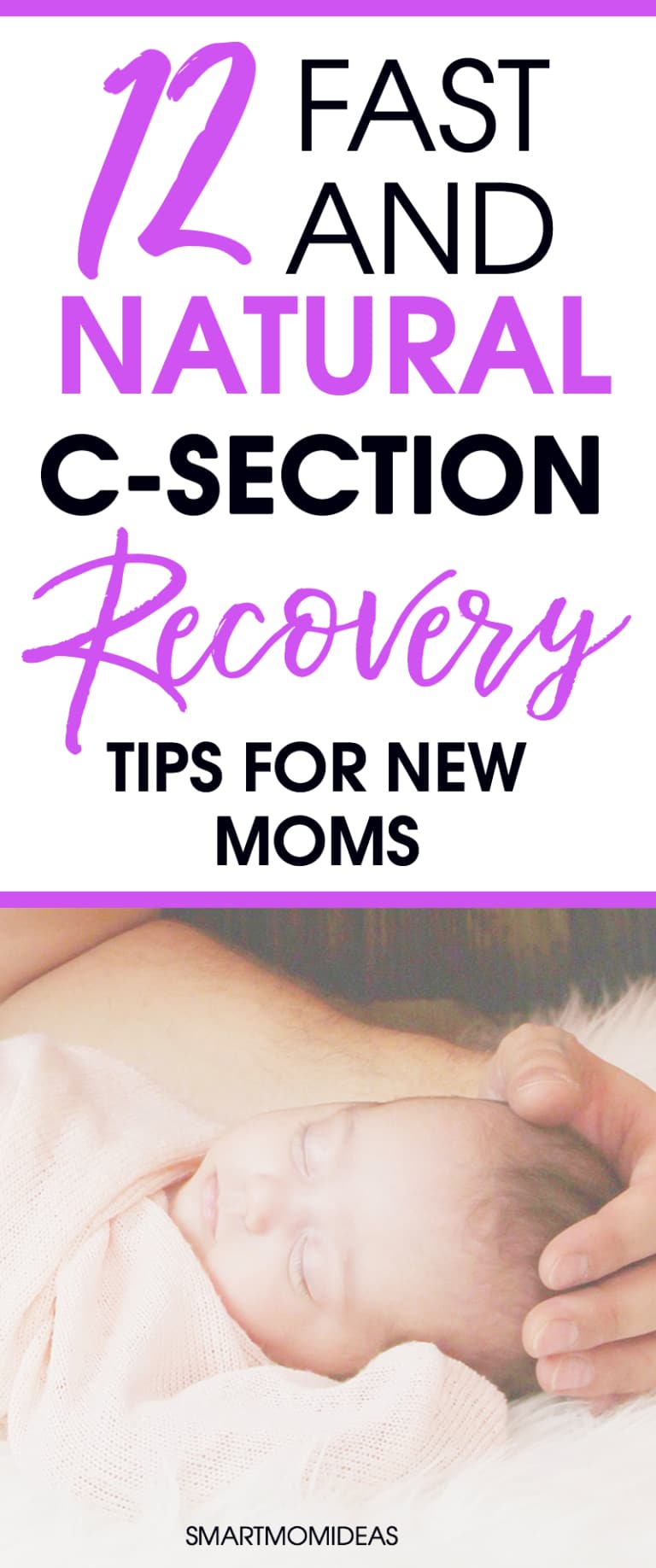
With my twins, I wasn’t given much choice because it was such a complicated pregnancy.
I needed to be safe and knew that having a c-section was part of my pregnancy journey with twins in my belly.
Even though I ended up with a routine cesarian delivery, I ended up losing quite a lot of blood and was whisked away after I gave birth.
I wasn’t able to see my twins after birth for many hours because I had to recover.
I was fortunate that my husband did kangaroo care with my twins until I arrived.
Whether you have a choice or were blindsided by an emergency c-section in the hospital, this guide is for you.
I have gathered the best tips on how to recover from a c section quickly and naturally using research, talking with friends who also had c-sections and my own experience.
Recovery is no trip to Disneyland, but these 12 tips should make the process much smoother for you.
1. Get Proper Support

I’m talking about abdominal binders and special garments for c-section recovery.
I’m not sure how your stomach feels after delivering naturally, but let me tell you that after a cesarean or, your stomach will feel like an uncomfortable bowl of jelly. If that’s not enough, having surgery means that every movement your ab muscles are in charge of, such as laughing, coughing and sneezing, feels like 500 daggers going inside of you.
There are many benefits of wearing an abdominal binder right after birth, such as:
- More support and easier to move around because your body feels more secure rather than on the brink of falling apart
- Better back support
- Improved posture, which is important for training your organs to heal in the proper position
- Decreased pain on abdominal muscles
- Reduced swelling
Look for binders or postpartum corsets that do not rub against your incision. You will have to buy two sizes because you will retain a lot of water the first week or two after birth and then lose inches quickly when the swelling goes down and your uterus begins to shrink.
Here are a few abdominal binders to try after surgery:
- Bellefit Postpartum Corset for C-Sections
- UpSpringBaby C-Panty
- 3-in-1 Postpartum Belly Wrap (this is similar to what they will give you in the hospital, but just in case they don’t)
The first few weeks of having twins is a complete blur to me honestly! Everything went so fast and taking care of two meant round the clock care from both me and my husband.
But, I do remember that having my postpartum support belt helped me move around easier while having one twin in a wrap while holding the other.
2. To Drug or Not to Drug?
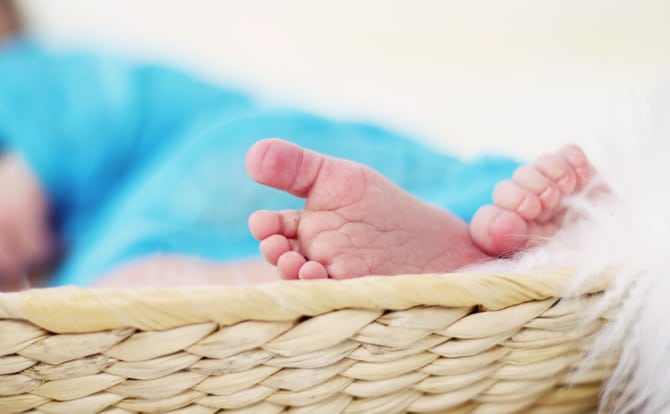
You will receive a lot of medication and prescriptions after your surgery. Not all pills are beneficial after baby comes, however. Definitely take your stool softeners and non-addictive painkillers, such as the higher doses of ibuprofen and Tylenol.
Be leery of other pain medication like Vicodin or Percocet. I was given a prescription for hydromorphone, but my doctor had to fill out some fancy forms and he seemed nervous prescribing it. I’m not sure if this is the standard painkiller or just because of my allergies, but apparently it’s highly addictive so I stuck to Tylenol.
Sometimes the pain is so bad that you need these stronger pain medications, but while they take the edge off your pain, they can also make it harder for you to feel like yourself again.
As far as the strong doses of safer painkillers, like ibuprofen, Motrin, and Tylenol, stay on top of your dosage.
Don’t wait until you are in pain to take the medication. This will make it easier for you to move around. You don’t want to be in so much pain that you are afraid to get out of bed. This will only delay the healing process.
Ask your doctor which is the best painkillers to take and if you need to alternate between them.
Also, ask your doctor if it is safe and advised to take Arnicare tablets as a homeopathic alternative for the pain. Since I became a new mom, I did my best to use all natural products in case breastfeeding transferred anything I was using.
3. Move as Soon as Possible, but Avoid Exercise
You should start moving around as soon as possible, even taking short, painful walks in the hospital room.
The first day or two you move around after a c-section, you will feel as if you are broken. You might start thinking, “Great, I have an amazing baby (or two), but I can’t even move and function anymore.”
This feeling doesn’t last forever – thankfully!
I walked a lot with the twins after birth, and it helped me heal and lose the baby weight. The first few weeks after, I took it slow but when I was ready, my husband and I would strap on the babies and walk around the neighborhood after dinner.
For some reason, there were a lot of appointments (and a lot of stairs) in those first few weeks. Let me tell you, I felt every step!
You are walking for healing, not for exercise the first six to eight weeks. Make sure to stop whenever you feel exhausted or in pain. Don’t push yourself, but do try to do gentle movement and stretching several times a day.
4. Accelerate Scar Healing

After your incision has healed, usually when your doctor checks it at six weeks, you can start to gently massage the area and apply scar cream to the area.
Regular massage will help prevent scar tissue from becoming hard and tight. Massage can also help keep away pain and numbness.
Your incision area will be itchy for several weeks, this is a good sign, since it means your wound is healing.
Be sure not to itch it or to massage your incision before your six-week checkup.
Also know that it might take many months, even a year, for the incision area and the skin around the area to feel normal. It is normal to have small patches of skin that don’t regain their complete nerve feelings, but the area is usually too tiny to notice or affect your daily life.
Even now – five years later – I can trace my c-section scar but it’s less noticeable. I wear it with honor!
Here are a few scar treatment choices to consider:
- Honey: I’m not going to lie. Putting honey all over my incision wound sounds miserable, but if it is as beneficial as this study suggests, I would definitely do it if I were to ever have another baby or c-section. This honey gel is a less sticky way to heal your scar.
- ScarAway Strips: These strips put healing ointment on your scar and also act as a barrier so your underwear doesn’t irritate the area. These four strips will last for two months.
- Earth Mama Scar Balm: This vegan balm helps heal and reduce the appearance of scars. It can also be used for stretch marks and minor burns.
5. Start Taking Collagen
I know, right? But hear me out.
Collagen is extremely beneficial for aiding in skin, hair, and muscle recovery.
This dietician used collagen and credits it for helping heal her pelvic floor, her brighter complexion, and reduced hair loss. Collagen is also naturally low in fat, calories, and carbohydrates, but high in protein and nutrients.
This grass-fed collagen powder is taste-free and can be blended easily into a smoothie, yogurt, or coffee. It comes in a container or easy serving sticks.
6. Eat Healing Foods

Eating healthy after your bundle of joy arrives is almost impossible, especially for nursing moms who can’t seem to ever get full.
However, eating the best foods possible after birth is essential for your mental health, physical recovery, and your energy levels.
Your digestion system is very delicate after birth, so avoid overloading it with heavy, greasy foods and caffeine.
Instead, drink bone broth and warm tea.
For the first few days, consume meals that are easy to digest – i.e. vegetable soup instead of steak and salad. Avoid foods high in iron too, such as egg yolks, since an overabundance of iron will make constipation worse.
Vitamin C is also vital for tissue repair, so be sure to include oranges, steamed broccoli, and sweet potatoes in your diet. Baobab powder is a superfood powder that is easy to stir in water or juice and contains large and natural doses of vitamin C, fiber, and electrolytes.
For the first month or so I lived on water, milkshakes, and soup. But, I soon started eating normally once my milk came in for breastfeeding and my c-section scar wasn’t hurting all the time.
7. Rest Up

Are you annoyed by how many times you’re told to rest and sleep once your new baby is here?
I know I was! I was exhausted for the first three days (make that months!). My twins didn’t sleep for long stretches and they woke up at different times all day and night!
But, I do know how important resting is.
Fortunately, on day four I was able to nap when my twins were napping!
As a new mom, you need to make rest a priority, for your physical and mental health. Whether this is your first or you’re trying to manage several little ones in your home, somehow, you need to aim for 10-12 hours of sleep during your first two months of recovery.
As a mom to twins, this a lofty goal to set for yourself!
I also know that your body will get the rest it demands one way or another – usually by burning out or getting sick. If it is not possible to get this much sleep during your recovery period, at least allow yourself to rest in bed or on the couch.
Save your energy for only the utmost important tasks, such as feeding older kids and changing diapers. The dishes and vacuuming can be done by someone else or done when you fully recover.
Your hormones are jumping all over the place after you have a baby, which means you might feel like you have a ton of energy when you leave the hospital. Force yourself to rest even when you feel amazing because the postpartum high is not going to last forever. In fact, many moms don’t feel the slump until the 10th or 12th week.
Running lavender or cedarwood oil through a diffuser next to your bed can help you relax and drift off to sleep easier. Avoid late-night social media sessions as well to ensure the best sleep you can possibly get – well the best sleep you can get with a newborn who has their days and nights confused.
8. Stay Hydrated
Drink up, mama! It’s important to drink plenty of water, herbal tea, and broth after your surgery to reduce swelling and inflammation and to increase healing and well-being.
After you leave the hospital, keep a large cup of water near you to make it easy to hydrate.
It is easier to drink through a bendy straw right after delivery, but if possible, avoid using a straw. The surgery will have left you filled with painful gas, and using a straw or drinking too quickly can cause more gas build up.
On a side note, we seem to have a thing for water-bottles at my house, and I think we have almost every popular water bottle out there! I tried a S’well bottle, but in the end settled on a simple insulated Thermos one. My husband loves his Klean Kanteen and Hydro Flask, but usually just uses a basic wide-mouth Nalgene bottle. The kids love their Funtainers (and it’s cute to see them trying to drink from my husband’s big 1 litre jugs)!
9. Get Home Help
Set up as much home help you can for once you come home.
Ask friends and family members to make healing soups (send them the link for this healing vegetable broth), take care of older children, or to stay and hold the baby for an hour so you can shower or nap.
It’s hard to ask for help, but you will feel better once you get the help you need.
If you can afford to hire help, you can also hire a housecleaner to come in every week or every other week to help you stay on top of chores or have a babysitter come to keep older kids entertained for a few hours. My sister gave us a year’s worth of maid assistance as a baby gift and I couldn’t have been happier with the help!
Postpartum doulas are also available for hire and can be a lifesaver for the first week after birth.
Of course, not everyone can hire help or do they have a lot of support from friends and family members. If this is you, try to set yourself up for success before the baby comes.
Freezing healthy meals in individual containers before your delivery date will make it easy to eat the best nutrition after birth with very little effort. Use paper plates and disposable utensils and cookware to make clean up easy the first month.
And to have some freezer meals on hand, check out this post on 31 freezer meals for new moms!
10. Give Yourself Grace

Every mama heals from their c-section differently, so don’t push yourself too hard.
If you were set on having a natural birth and ended up having surgery, give yourself grace. It’s hard not to have the beautiful birth you wanted, especially when recovery is painful, but try focusing on how amazing it is to have our baby finally here and in your arms.
For me, I was put on bed rest at 23 weeks and knew early on I was going to have a c-section. Although I wanted to have a natural childbirth, I knew that wasn’t going to happen in my twin pregnancy.
Some moms will be able to effortlessly bring babies into this world and breastfeed them with ease for many months.
This doesn’t make them better mothers in any terms. The best moms are those that love and care for their babies, and that love and care isn’t determined by how they came into the world or if they are fed with breastmilk or formula.
Give yourself ample time to recover, and don’t stress about getting back to work, housework, or your business. These first weeks are rough and go by so fast, but you want to cherish this little human as best as you can when you are in this postpartum fog.
11. Prep Your Home for Recovery
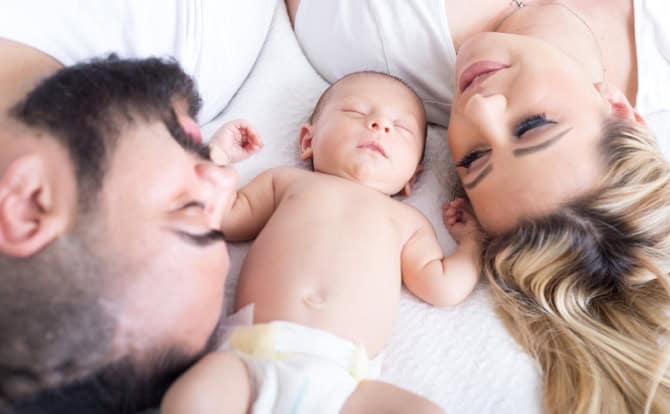
You don’t realize how much you use your stomach muscles daily until you get home. Or, how crazy it is the first week after bringing home baby (or twins!).
Things as simple as getting into bed or taking a shower can be challenging and painful during recovery. Use a step stool to help you get into high beds and use a baby bed that attaches to the edge of your bed or rests next to you safely.
This will allow you to feed and soothe your baby without having to get out of bed at night.
Here are a few helpful items to have around the house:
- Docatot: This can be placed next to you without the risk of co-sleeping.
- Side Sleeper: A more affordable option for sleeping your baby next to you.
- My Breast Friend Nursing Pillow: This nursing pillow is a little larger than the Boppy, but it can be easier to feed baby and have proper posture while nursing.
- Supportive Underwear: Don’t think you are going to rock that cute underwear anytime soon. For the first month after birth, you will want large granny panty-style underwear. You will want the underwear to have full coverage, hold a large pad, and sit several inches above your incision. #realmomtalk
12. Bring the Right Gear to the Hospital
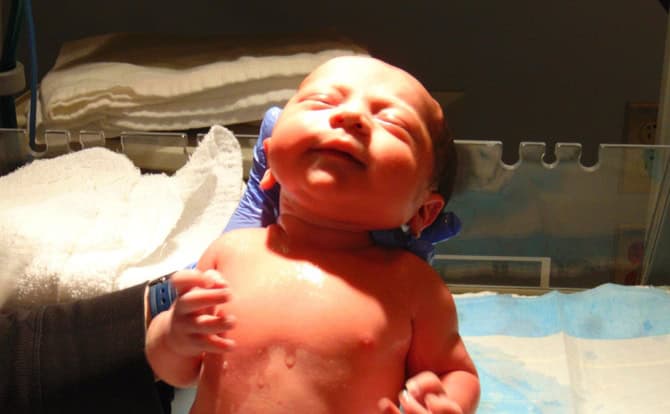
Whether you think you are having a c-section or not, you can pack these items to be prepared. Go ahead and leave your abdominal binder at home, since you can request one at the hospital. Instead, pack the following:
- A comfortable, flowy dress: Even the simple act of pulling on sweatpants is painful. Instead, choose a loose dress for your going home outfit so you can easily slip it on over your head and don’t have fabric rubbing on your incision.
- A light robe and button-down shirt: You’ll want to get out of your hospital gown as soon as possible. It just makes you feel human again. A light robe and/or comfy button down top will make nursing easy but still keep you covered up for guests.
- Flip flops or backless shoes: There is a good chance that your feet will be more swollen leaving the hospital than when you got there. Slip-on shoes or flip flops are ideal for walking around the hospital and leaving the hospital since your normal shoes might not fit until your swelling goes down in a few days. I ended up using my crocs!
- Simple makeup items and face wipes: There are a lot of other essentials you need to bring, like a car seat, but don’t forget a small makeup bag with easy-to-apply makeup, hair brush, and facial wipes. You will feel like you were just dragged out of hell when you finally settle in your room. These simple items can make you feel more like yourself and make you more open to seeing guests. It’s really not about how you look, but how you feel.
Get Healing, Mama!
I promise the rough healing stage doesn’t last forever. Hopefully, these tips will help you recover faster and prepare you better than I was going into my delivery.
Have you had a c-section before? Or are you thinking about having a vbac? What were your go-to items and tips to make the first few months manageable? Let me know in the comments!
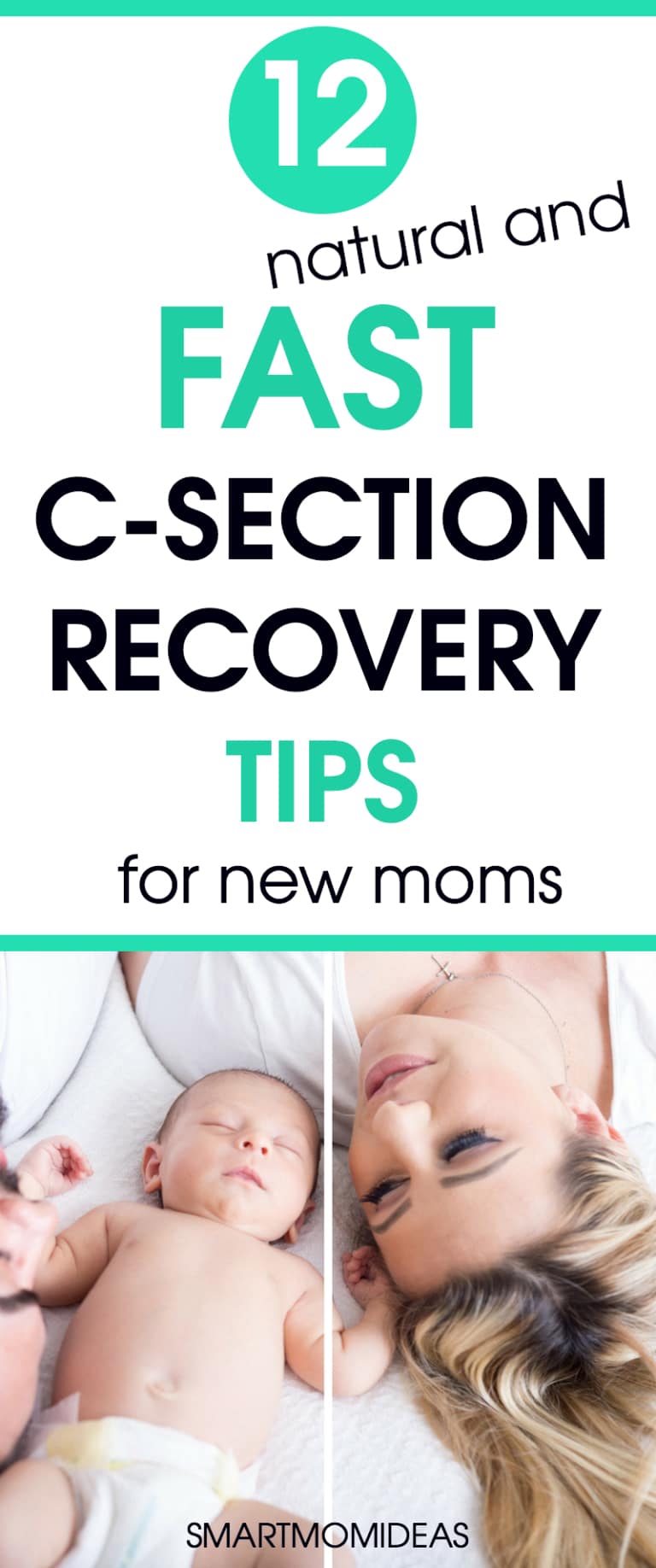

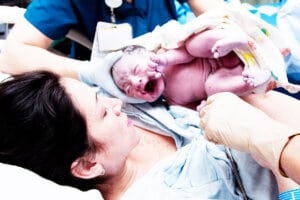

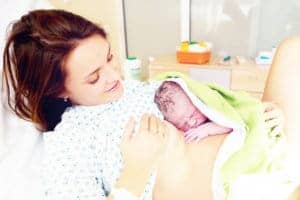
Leave a Reply